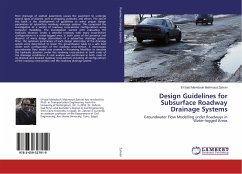As an important component of active and sustainable
transportation, cycling is recognised as a legitimate
transportation mode. However, to be useful, bikeways
need to provide cyclists using them with a high level
of safety. Unexpected changes in the horizontal and
vertical geometry or cross-section of a bikeway are
hazards to cyclists that can be minimised through
safety audits.
A safety audit of the existing bikeways in Calgary,
Alberta was undertaken as a case study to determine
the relative safety of different bicycle facilities.
Lateral and vertical clearance, sight distance,
grades, street furniture, signage, bikeway width and
quality were all reviewed as part of this audit.
These design elements formed the basis of the safety
audit as each has the potential to increase or
decrease the safety to a cyclist depending on the
situation. The principles and guidelines of what
constitutes a comprehensive safety audit for bikeway
systems are outlined along with many examples of good
bikeways and unsafe situations.
These guidelines should help anyone planning
bikeways, reviewing bikeway safety, or undertaking
the safety audit, or review, of any existing or
planned bikeways.
transportation, cycling is recognised as a legitimate
transportation mode. However, to be useful, bikeways
need to provide cyclists using them with a high level
of safety. Unexpected changes in the horizontal and
vertical geometry or cross-section of a bikeway are
hazards to cyclists that can be minimised through
safety audits.
A safety audit of the existing bikeways in Calgary,
Alberta was undertaken as a case study to determine
the relative safety of different bicycle facilities.
Lateral and vertical clearance, sight distance,
grades, street furniture, signage, bikeway width and
quality were all reviewed as part of this audit.
These design elements formed the basis of the safety
audit as each has the potential to increase or
decrease the safety to a cyclist depending on the
situation. The principles and guidelines of what
constitutes a comprehensive safety audit for bikeway
systems are outlined along with many examples of good
bikeways and unsafe situations.
These guidelines should help anyone planning
bikeways, reviewing bikeway safety, or undertaking
the safety audit, or review, of any existing or
planned bikeways.








